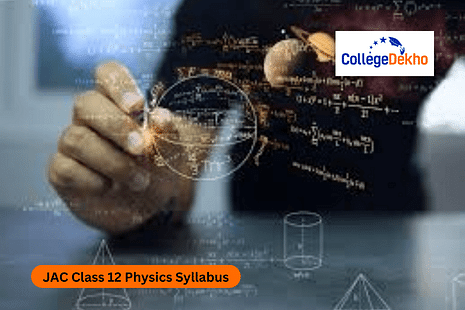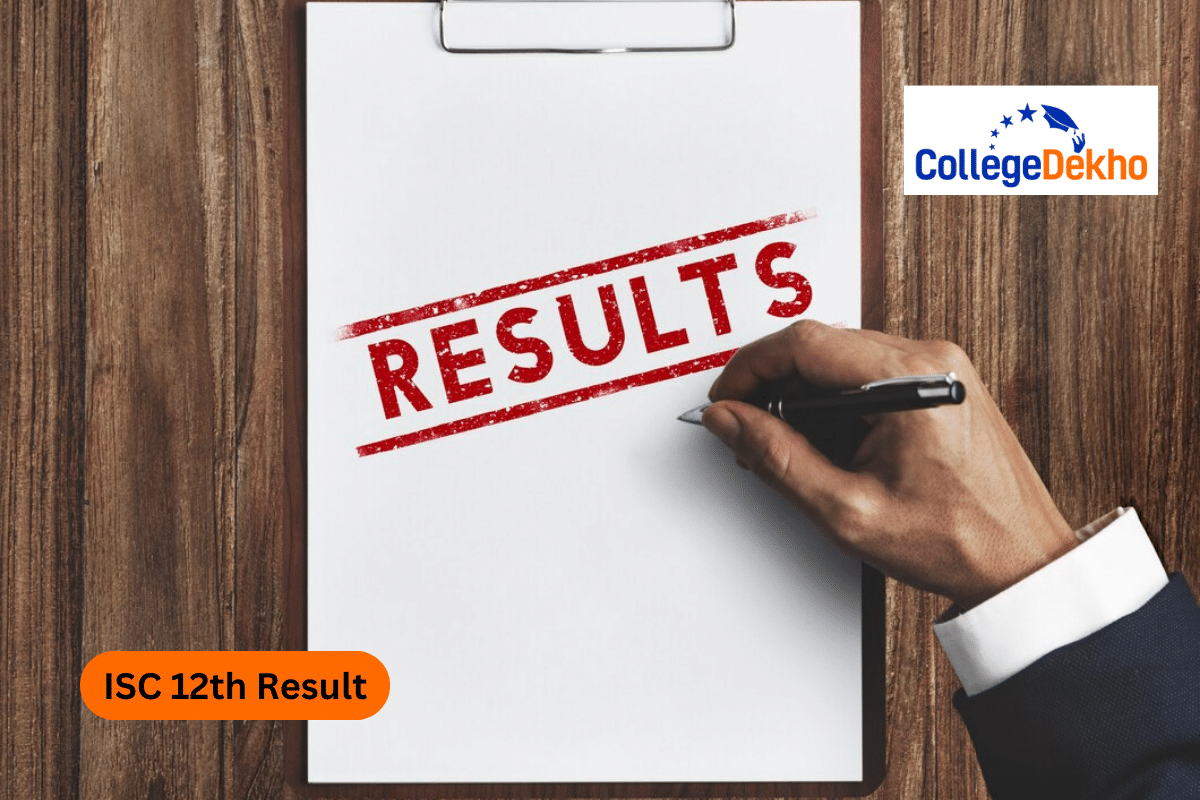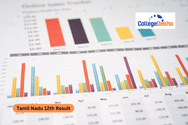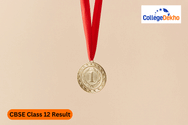

Never Miss an Exam Update
JAC Class 12 Physics Syllabus 2025
: The Jharkhand Academic Council (JAC) will release the JAC 12th Physics syllabus 2025 on its official website. Students appearing for the upcoming 10th board exam can download the JAC class Physics syllabus 2025 PDF at jac.jharkhand.gov.in. There are 14 chapters included in the JAC Class 12 Physics syllabus 2025 and these chapters are grouped into 9 units. Unit V Electromagnetic waves and Unit VI Optics are the two units carrying the highest weightage of 18 marks in the syllabus. The second highest weightage carrying units are Unit III Magnetic Effects of Current and Magnetism, and Unit VI Electromagnetic Induction and Alternating Currents with 17 marks. Alongside this, students must go through the entire
JAC Class 12 Exam Pattern 2025
of Physics to understand the marking scheme of the paper.
The Jharkhand Board 12th Physics exam 2025 will be conducted for a total of 100 marks, where 70 marks will be theory exam and the practical exam will carry a weightage of 30 marks. The
JAC 12th exam date 2025
will be tentatively released in January 2025, and the exams will be held in February 2025. To pass the JAC 12th board exams 2025, students must receive a score of at least 33 percent in each subject as well as an aggregate score. A syllabus for the practical exams will also be included in the official PDF and the students are required to score 33% marks in the practical exam in order to get the pass certificate. Check more information about the JAC 12th Physics Syllabus 2025 here.
Also Read-
JAC 12th Syllabus 2025
JAC Class 12 Physics 2025 Download PDF
The JAC Class 12 Physics syllabus 2025 is demanding and difficult, but it is also rewarding. Students will gain the skills and knowledge they need to succeed in their academics and beyond by completing this physics syllabus Class 12 JAC 2025. Students can download the PDF for the syllabus from the direct link that will be provided after the release. Meanwhile, students can check out the previous year's syllabus:JAC Class 12 Physics Syllabus 2025 Course Structure
Students can check out the major information about the JAC Class 12 Physics Syllabus 2025 from the table given below and it will help them to start their preparation for the board exams accordingly:| Units | Name of the Unit | Name of the Chapter | No. of Periods | Total Number of Marks |
|---|---|---|---|---|
| Unit –I | Electrostatics | Electric Charges and Fields | 26 | 16 |
Electrostatic Potential and Capacitance | ||||
| Unit – II | Current Electricity | Current Electricity | 18 | |
| Unit – III | Magnetic Effects of Current and Magnetism | Moving Charges and Magnetism |
25
| 17 |
Magnetism and Matter | ||||
| Unit – IV | Electromagnetic Induction and Alternating Currents | Electromagnetic Induction |
24
| |
Alternating currents | ||||
| Unit – V | Electromagnetic Waves | Electromagnetic Waves | 04 | 18 |
| Unit – VI | Optics | Ray Optics and Optical Instruments | 30 | |
Wave Optics | ||||
| Unit – VII | Dual Nature of Radiation and Matter | Dual Nature of Radiation and Matter | 08 | 12 |
| Unit – VIII | Atoms and Nuclei | Atoms | 15 | |
Nuclei | ||||
| Unit – IX | Electronic Devices | Semiconductor - Electronics: Materials, Devices, and Simple Circuits | 10 | 7 |
Practical work | -- | 160 | 30 marks |
Also Check: JAC Class 12 Previous Year Question Paper
JAC 12th Physics Syllabus 2025 Chapter Wise
There are a lot of chapters included in the Physics subject and you can check out the information about the detailed topics in each chapter from the table given below:Name of the Chapter | Topics |
|---|---|
Electric Charges and Fields | Electric charges, Conservation of charge, Coulomb's law-force between two- point charges, forces between multiple charges; superposition principle, and continuous charge distribution. Electric field, electric field due to a point charge, electric field lines, electric dipole, electric field due to a dipole, torque on a dipole in the uniform electric field. Electric flux, statement of Gauss's theorem and its applications to find field due to infinitely long straight wire, uniformly charged infinite plane sheet, and uniformly charged thin spherical shell (field inside and outside). |
Electrostatic Potential and Capacitance | Electric potential, potential difference, electric potential due to a point charge, a dipole, and system of charges; equipotential surfaces, electrical potential energy of a system of two point charges and of electric dipole in an electrostatic field. Conductors and insulators, free charges, and bound charges inside a conductor. Dielectrics and electric polarization, capacitors, and capacitance, combination of capacitors in series and in parallel, capacitance of a parallel plate capacitor with and without dielectric medium between the plates, energy stored in a capacitor (no derivation, formulae only). |
Current Electricity | Electric current, flow of electric charges in a metallic conductor, drift velocity, mobility and their relation with electric current; Ohm's law, V-I characteristics (linear and non-linear), electrical energy and power, electrical resistivity and conductivity, temperature dependence of resistance, Internal resistance of a cell, potential difference and emf of a cell, combination of cells in series and in parallel, Kirchhoff's rules, Wheatstone bridge. |
Moving Charges and Magnetism | Concept of magnetic field, Oersted's experiment. Biot - Savart law and its application to current carrying circular loop. Ampere's law and its applications to infinitely long straight wire. Straight solenoid (only qualitative treatment), force on a moving charge in uniform magnetic and electric fields. Force on a current-carrying conductor in a uniform magnetic field, force between two parallel current-carrying conductors-definition of ampere, torque experienced by a current loop in uniform magnetic field; Current loop as a magnetic dipole and its magnetic dipole moment, moving coil galvanometer- its current sensitivity and conversion to ammeter and voltmeter |
Magnetism and Matter | Bar magnet, bar magnet as an equivalent solenoid (qualitative treatment only), magnetic field intensity due to a magnetic dipole (bar magnet) along its axis and perpendicular to its axis (qualitative treatment only), torque on a magnetic dipole (bar magnet) in a uniform magnetic field (qualitative treatment only), magnetic field lines. Magnetic properties of materials- Para-, dia- and ferro - magnetic substances with examples, Magnetization of materials, effect of temperature on magnetic properties |
Electromagnetic Induction | Electromagnetic induction; Faraday's laws, induced EMF and current; Lenz's Law, Self and mutual induction. |
Alternating currents | Alternating currents, peak and RMS value of alternating current/voltage; reactance and impedance; LCR series circuit (phasors only), resonance, power in AC circuits, power factor, wattless current. AC generator, Transformer |
Electromagnetic Waves | Basic idea of displacement current, Electromagnetic waves, their characteristics, and their transverse nature (qualitative idea only). Electromagnetic spectrum (radio waves, microwaves, infrared, visible, ultraviolet, X-rays, gamma rays) including elementary facts about their uses. |
Ray Optics and Optical Instruments | Ray Optics: Reflection of light, spherical mirrors, mirror formula, refraction of light, total internal reflection and optical fibers, refraction at spherical surfaces, lenses, thin lens formula, lens maker’s formula, magnification, power of a lens, a combination of thin lenses in contact, refraction of light through a prism. Optical instruments: Microscopes and astronomical telescopes (reflecting and refracting) and their magnifying powers. |
Wave Optics | Wave optics: Wave front and Huygens principle, reflection and refraction of plane wave at a plane surface using wave fronts. Proof of laws of reflection and refraction using Huygens principle. Interference, Young's double slit experiment and expression for fringe width (No derivation final expression only), coherent sources and sustained interference of light, diffraction due to a single slit, and width of central maxima (qualitative treatment only). |
Dual Nature of Radiation and Matter | Dual nature of radiation, Photoelectric effect, Hertz and Lenard's observations; Einstein's photoelectric equation-particle nature of light. Experimental study of photoelectric effect Matter waves-wave nature of particles, de-Broglie relation |
Atoms | Alpha-particle scattering experiment; Rutherford's model of atom; Bohr model of hydrogen atom, Expression for radius of the nth possible orbit, velocity and energy of electron in nth orbit, hydrogen line spectra (qualitative treatment only). |
Nuclei | Composition and size of nucleus, nuclear force Mass-energy relation, mass defect; binding energy per nucleon and its variation with mass number; nuclear fission, nuclear fusion. |
Semiconductor -Electronics: Materials, Devices, and Simple Circuits | Energy bands in conductors, semiconductors, and insulators (qualitative ideas only) Intrinsic and extrinsic semiconductors- p and n-type, p-n junction Semiconductor diode - I-V characteristics in forward and reverse bias, application of junction diode -diode as a rectifier. |
Also read: JAC Class 12 Sample Paper 2025
JAC Class 12 Physics Practical Exam Syllabus 2025
The Jharkhand Board will be conducting the JAC Class 12 Physics Practical Exam 2025 for 30 marks. The maximum time duration for the JAC Class 12 Physics Practical Exam 2025 will be 3 hours. The course structure for the practical exam is given below:JAC Class 12 Physics Experiments
SECTION – A1. To determine the resistivity of 2-3 wires by plotting a graph for potential difference versus current.
2. To find resistance of a given wire / standard resistor using metre bridge.
3. To verify the laws of combination (series) of resistances using a metre bridge.
OR To verify the laws of combination (parallel) of resistances using a metre bridge.
4. To determine resistance of a galvanometer by half-deflection method and to find its figure of merit.
5. To convert the given galvanometer (of known resistance and figure of merit) into a voltmeter of the desired range and to verify the same. OR To convert the given galvanometer (of known resistance and figure of merit) into an ammeter of the desired range and to verify the same.
6. To find the frequency of AC mains with a sonometer.
SECTION-B
1. To find the value of v for different values of u in the case of a concave mirror and to find the focal length.
2. To find the focal length of a convex mirror, using a convex lens.
3. To find the focal length of a convex lens by plotting graphs between u and v or between 1/u and 1/v.
4. To find the focal length of a concave lens, using a convex lens.
5. To determine the angle of minimum deviation for a given prism by plotting a graph between angle of incidence and angle of deviation.
6. To determine the refractive index of a glass slab using a traveling microscope. 7. To find the refractive index of a liquid using the convex lens and plane mirror. 8. To find the refractive index of a liquid using a concave mirror and a plane mirror.
9. To draw the I-V characteristic curve for a p-n junction diode in forward and reverse bias.
JAC Class 12 Physics Activities
1. To measure the resistance and impedance of an inductor with or without iron core.2. To measure resistance, voltage (AC/DC), current (AC) and check continuity of a given circuit using multimeter.
3. To assemble a household circuit comprising three bulbs, three (on/off) switches, a fuse and a power source.
4. To assemble the components of a given electrical circuit.
5. To study the variation in potential drop with the length of a wire for a steady current.
6. To draw the diagram of a given open circuit comprising at least a battery, resistor/rheostat, key, ammeter and voltmeter. Mark the components that are not connected in proper order and correct the circuit and also the circuit diagram.
SECTION-B
1. To identify a diode, an LED, a resistor and a capacitor from a mixed collection of such items.
2. Use of multimeter to see the unidirectional flow of current in case of a diode and an LED and check whether a given electronic component (e.g., diode) is in working order.
3. To study effect of intensity of light (by varying distance of the source) on an LDR.
4. To observe refraction and lateral deviation of a beam of light incident obliquely on a glass slab.
5. To observe diffraction of light due to a thin slit.
6. To study the nature and size of the image formed by a (i) convex lens, or (ii) concave mirror, on a screen by using a candle and a screen (for different distances of the candle from the lens/mirror).
7. To obtain a lens combination with the specified focal length by using two lenses from the given set of lenses.
JAC Class 12 Physics Exam Pattern 2025
Refer to the table below to check the key highlights of JAC class 12 Physics exam pattern 2025.
Particulars | Details |
|---|---|
Conducting Body Name | Jharkhand Board Intermediate Examination |
| Full Marks | 70 marks (theory exam) and 30 (practical exam) |
| Types of Question | MCQ, Very Short Type, Short Type, Long Type Questions |
Question Paper Pattern |
|
Duration | 3 hours |
Medium | English / Hindi |
Mode | Offline |
Number of subjects | 5 or 6 (as elected by the student) |
Maximum Marks | 100 marks |
Passing marks for each subject | 33% |
Overall Passing marks | Aggregate 33% |
| Negative Marking | No Negative Marking |
How To Download JAC Class 12 Physics Syllabus 2025?
Below are the important steps students must follow to download the JAC class 12 Physics Syllabus 2025. The PDF files can be accessed from any device and can be downloaded for study.- Step 1: Visit JAC's official website.
- Step 2: Find the "Others" section.
- Step 3: Click on the 'Syllabus' link.
- Step 4: You will be directed to a new page, after that choose the Class 12 Physics syllabus from the list.
- Step 5: Download and save it for future reference
Was this article helpful?
















